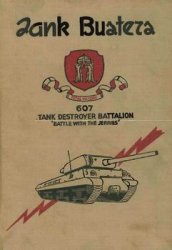In December 1969, the Soviet Chief of Anti-Aircraft Forces had come to inspect the somewhat embarrassing situation that had been created by the failure of Soviet-supplied weapons to withstand the Israeli air attacks. Nasser made a secret visit to Moscow in January 1970, emphasizing the seriousness of the situation that had developed and appealing for additional Soviet aid. During this visit, he posed the military dilemma facing the Egyptians as well as the problems that might face his regime if the Israeli attacks were to persevere. Soviet response was immediate and unhesitant. Indeed, the Soviets seized on Nasser’s desperate situation to develop their own plans for additional penetration in the area. By mid-February, some 1,500 Soviet personnel had arrived with consignments of the latest anti-aircraft system, including the new SAM-3 missiles. These missiles, with their increased mobility and effectiveness, were manned by Soviet and not Egyptian troops and were sited both in the Canal zone and
In depth in Egypt. The Soviet forces in Egypt rose to some 15,000 troops, which were engaged in air defence,.manned missile and air installations, and assumed responsibility for the protection of Egyptian strategic depth, initially by missiles and later with Russian-piloted aircraft. Thus was created a situation whereby Israeli penetration of Egyptian air space could spell a clash with Soviet forces. The SAM-3 missile was designed especially for use against low-flying aircraft; it could be mounted on a mobile platform or sited in heavily-protected underground bunkers. Because it was complementary to the longer range SAM-2 missile it effectively closed many of the ‘holes’ in the Egyptian defence system and made the task of the Israeli Air Force that much more difficult.
During this period in early 1970, the battles, patrolling activities by both sides, mining and artillery attrition were intensified along all the sectors. During February, in Israel’s southern port of Eilat, Egyptian frogmen operating from Aqaba in Jordan succeeded in sinking an Israeli Navy auxiliary vessel and damaging a landing craft; an Egyptian patrol in depth succeeded in taking prisoner two Israeli canteen employees; and an Israeli force crossed the Canal at Al-Kaf, south of Port Said, attacking artillery batteries and bunkers. Early in the month, an Israeli mixed patrol of armour and infantry, moving along the eastern bank of the Canal, was ambushed by an Egyptian patrol that had taken up positions on the Israeli side of the Canal. In the ensuing action, the commander of the Israeli force and four of his troops were killed, and a short battle ensued. Some days later, an Israeli patrol engaged an Egyptian reconnaissance unit that had penetrated as far as the Mitla Pass: all the Egyptians were either captured or killed. At the same time, the Egyptian Air Force mounted its ‘hit and run’ attacks across the Canal and, in one of these attacks, caused eleven Israeli casualties. The increased air activity over the area of the Canal led to many dogfights during the month of February, in the course of which eight Egyptian and two Israeli aircraft were shot down. The month of March saw the fighting grow in intensity, as in air battles the Egyptians lost twelve aircraft.
Meanwhile, the process of ‘Sovietization’ was growing, as additional Soviet forces poured into Egypt and the new anti-aircraft system became more operative and effective. These developments were a natural corollary to the traditional Soviet policy that had led to the Six Day War and had militated against any form of compromise on the part of the Arabs in negotiating with Israel. The Soviet Union was achieving one of its strategic aims — to establish Soviet forces in the Mediterranean and along the vital strategic waterway of the Suez Canal, thus enabling them to control the main link between the Mediterranean and the Indian Ocean. The developments in Egypt created a convenient pattern within which the Soviet strategic aim could be realized, particularly within the context of the confrontation with China, which gave the Indian Ocean additional importance within the overall strategic pattern.
In an attempt to exert pressure on the Egyptians and induce them to agree to a cease-fire, Moshe Dayan, Israel’s Minister of Defence, proposed to the Ministerial Defence Committee that Israel carry out air attacks on
Army bases deep inside Egypt. According to Dayan, the attacks during the months of January, February and March 1970 had caused Egyptian morale to collapse and confronted Nasser with a dilemma: on the one hand he realized that his army was in no position to prevent the Israeli operations and, at the same time, he was not prepared to declare a ceasefire and enter into peace negotiations with Israel. In his memoirs,* Dayan points out that Nasser then flew to Moscow and asked the Russians to send him Soviet troops. Thus he confirms that it was the Israeli bombing in depth of Egypt that brought about the massive entry of Soviet troops into Egypt.
From a short term point of view, the Israeli deep penetration bombing had contained a certain logic; but, from a long term point of view, it would appear to have been a major error. Politically, it failed to achieve its objectives, for Nasser’s authority was in no way damaged. Although Egyptian installations were at times in ruins, the Egyptians persevered with attacks along the Canal. Whether or not the natural course of events would have led to increased Sovietization in Egypt, it is difficult to say, but there is no doubt that the Israeli decision to bomb Egypt in depth constituted a major turning-point in the Middle East, and created a situation that encouraged President Nasser to open up Egypt, not only to Soviet advisers, but also to Soviet combat units. In April 1970, Soviet-piloted MiG-2 Is began to fly operationally in defence of central Egypt to protect these areas from Israeli air attacks. The voices of Russian pilots became commonplace on the ether in the Middle East. And, indeed, to avoid the danger of a clash with aircraft of the Soviet Air Force, Israeli air attacks in depth over Egypt ceased in April 1970. The renewed sense of security that the increased Soviet presence instilled in their hard-pressed ally led to an intensification of their air activity over the Sinai. As the Egyptians began to launch a series of hit-and-run raids against Israeli targets, air battles developed over the Sinai. In one of the first encounters, three Egyptian Sukhoi Su-7s raiding Israeli targets were shot down.
The renewed Egyptian offensive, mounted with the knowledge of an immediate Soviet air back-up over Egyptian air space, created a swing of the pendulum in the battle: in the three months of March, April and May 1970, 64 Israeli troops were killed and 149 wounded, while Egyptian ambushes on the Israeli bank of the Canal cost Israel eighteen dead, six wounded and six prisoners. As the fighting rose in intensity, the Israeli Air Force, adapting itself to the new situation created by this new Soviet deployment in Egypt by adopting new tactics to deal with the ground-to-air missile system, launched its most intensive bombing attacks to date over a period of eleven days, beginning on 30 May, against the Egyptian positions along the Canal. Within a period of one week, more than 4,000 bombs were dropped on Egyptian positions and, on the seventh day of successive bombing on the northern sector, the Israeli Air Force attacked for a continuous period of some 141/2 hours. On 12 June, Israeli ground forces crossed the Canal and seized an area along a mile-and-a-half front
Moshe Dayan, The Story of My Life, p. 449, 1976.
South of Port Said, destroying the Egyptian positions in the area before withdrawing. .
The struggle along the Suez Canal became one of major importance for the Soviet Union, and the leadership closely followed every phase of the battle, for the entire system of air defence upon which the Soviet Union, and indeed the Soviet empire, relied for its defence was now being put to the test in Egypt by a small Israeli Air Force equipped with Western equipment. Indeed, the experience being gained in these battles was proving to be invaluable both for the Russians and for the Western powers — in particular, for the Americans, who were closely monitoring the lessons being learned from the battles in the skies of Egypt and over the Canal. Nasser’s confidant, Mohammed Hassanein Heikal, Editor of Al Ahram, described vividly a meeting in the Kremlin in which there was an argument between Leonid Brezhnev and Nasser as to how many Israeli aircraft had been shot down as a result of the new Soviet tactics the day before. There was a disagreement, whereupon Brezhnev brusquely ordered Marshal Grechko, the Soviet Defence Minister, to produce the evidence. He for his part immediately produced reports setting out in great detail the story of the shooting down of Israeli aircraft the day before. The issue had become important enough for it to be a central one at the centre of power of the Soviet empire.
As the Israeli attacks intensified, the Soviets decided upon a new strategy of air defence. They planned a completely new defensive system to deal with the Israeli attacks. At the end of June, a major redeployment of Soviet-Egyptian air defences of the air space over the Suez Canal and in its vicinity was completed. The effect was immediate: on 30 June, two Israeli aircraft were shot down during an attack on the Canal area; one of the pilots was rescued by helicopter from Egyptian territory, and three aircrew members were taken prisoner. On 5 July an additional plane was shot down with the crew being taken prisoner. Hitherto, the Egyptian air defence had been spread out and deployed all along the 100-mile length of the Suez Canal. Now, the Russians had created a box some 20 miles deep and 45 miles long covering the central and southern sectors. Missiles were sited in ‘packs’ that gave mutual covering fire, and the entire system was reinforced by heavy concentrations of conventional anti-aircraft weapons. A solution was found to the vulnerability of the SAM-2 missile, sited as they had been in fixed positions in easily-discernible concrete emplacements: hastily created earth positions were scraped out by earth moving machinery, and the missiles themselves were moved into the chosen launching site under cover of darkness as close as possible to the estimated launching time. Now, many missiles could be fired at single targets, unlike the situation that had obtained hitherto in Egypt and in Vietnam, where only one or two missiles were launched against single aircraft. Moreover, the SAM-2 Guideline missile was of an improved range and was far more accurate than its predecessor. Each SAM-2 battery consisted of six launchers and was linked to a radar system for advance warning and interception. Several dozen four-barrelled anti-aircraft guns of the 23mm ZSU type were deployed with the batteries, and these proved to be very
Effective. (Indeed, of the Israeli aircraft shot down that week by antiaircraft fire, three were shot down by these guns, rather than by SAM-2 missiles.) While the SAM-2 was deployed against medium-altitude attacks (with an improved capability of up to 60,000 feet) the SAM-3 goa missile was a low - to medium-altitude weapon, sited in batteries consisting of eight missiles on four twin launchers, which could be mobile or fixed, with a slant range of 18 miles and with two types of radar being used.
Once the skies of Cairo became the responsibility of Soviet-piloted MiG-2 Is, the Egyptians could concentrate a greater number of antiaircraft batteries along the Canal. But, despite the losses now being incurred, the Israeli Air Force continued to attack this new system, destroying five SAM batteries early in July.
The new anti-aircraft deployment in Egypt was not only a reply to the immediate problems facing the Egyptians in their attacks of the Canal, but was the expression of a strategic development that would only be fully appreciated three years later on 6 October 1973, with the opening of the Egyptian offensive in the Yom Kippur War. The new heavy concentration of anti-aircraft weapons in the central sector was sited in the form of an' ellipse some 18 miles in depth with the farthest missile of this concentration some 30 miles east of Cairo and the nearest some 12 miles west of the Canal. It was clear that the next phase would be to leapfrog towards the Canal, a move that would place the missiles in a position to be effective over the front-line yet be out of range of Israeli artillery. Thus, they would be a factor in Israel’s attacks against the Egyptian artillery concentrations. It became clear that, in addition to a policy of achieving air parity with Israel, the anti-aircraft capability of the Egyptian forces along the Suez Canal had become a vital element in developing future Egyptian offensive strategy. The increased reach of the missile system would bring the air space over the Israeli front-line within range of Egyptian missiles. The stage would be set, as far as the anti-aircraft phase was concerned, for the ultimate crossing of the Suez Canal by the Egyptians.
(
As the Soviet penetration grew, Soviet involvement in the fighting in the air defence of Egypt increased considerably. A marked improvement in the air-defence system of Egypt was evident. The number of air battles increased, and Russian-piloted aircraft tangled on 25 and 27 July with Israeli aircraft. On 30 July, an air battle developed between Israeli forces and Soviet-piloted MiG-2 Is. An Israeli patrol was flying over the northern sector of the Gulf of Suez when it came under attack from eight MiG-21 s flying in two formations; in the course of the dogfight that ensued, five Soviet aircraft were shot down for no loss on the part of Israel. According to Moshe Dayan,* the Israeli pilots thought the Soviet pilots lacked experience and flexibility: they behaved in battle as they had been taught in training exercises, and stuck to the book, flying in pairs, close together, and not breaking off fast enough. The five pilots bailed out and landed on the Egyptian side of the Gulf. When they were finally found, one was unhurt, two were wounded and two were dead. In order to avoid an
Ibid.
Escalation, no communique on this aerial encounter was issued, and nor indeed did the Egyptians or Russians mention a word of it in public. There was considerable consternation in the Soviet Union, but the Egyptians openly rejoiced at the Soviet discomfiture: they heartily disliked their Soviet allies, whose crude, gauche behaviour had created bitter antagonism, and whose officers looked down on the Egyptian officers, treating them with faintly-concealed disdain. The commander of the Soviet Air Defences and the commander of the Soviet Air Force rushed to Egypt on that very day.




 World History
World History









